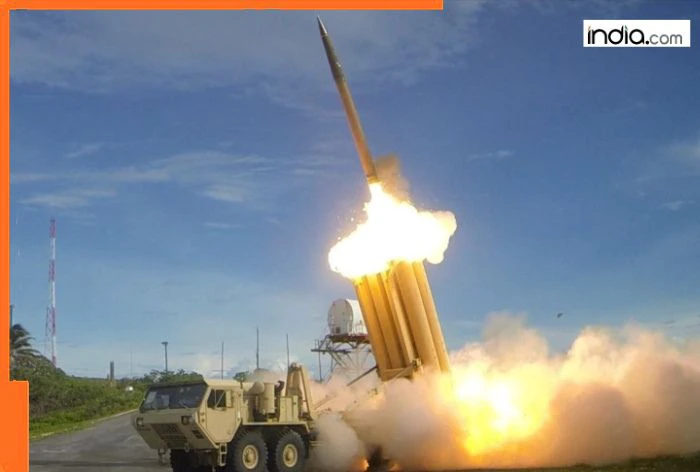Israel-Iran war: The United States spent billions of dollars worth of its missile stocks to protect Israel from advanced Iranian ballistic missiles during last month’s 12-day-long Israel-Iran war, with a recent report revealing that as much as 14 percent missile stocks of US’ THAAD air defense system were exhausted in shooting down missiles fired towards Israel, and would take about 3-5 years to replenish.
Why US’ THAAD missile stocks depleted?
According to analysis conducted by researchers at the Jewish National Security Institute of America (JINSA), Israel used up more than of interceptors of the THAAD air defense system to stop the Iranian missile barrage during the 12-day Israel-Iran war.
As per the report, Iran launched a total of 574 different types of missiles at Israel, out of 201 were successfully intercepted by the THAAD air defense system, along with Israel’s Arrow-2 and Arrow-3 interceptors, while remaining were purportedly shot down using other defense systems, including the famed Iron Dome.
However, the report noted that it could take anywhere between 3 to 5 years to replenish the THAAD batteries that were depleted in protecting Israel against Iranian missiles. As many as 92 THAAD interceptors were fired to stop Iran’s medium-range ballistic missiles, which is a large part of the US’s total estimated stockpile of 632 THAAD missiles, it stated.
“This also means that we have to replenish our reserves faster and return to earlier levels rapidly,” JINSA Associate Director Sicurel noted in the report.
How much do THAAD interceptors cost?
Manufactured by US defence giant Lockheed Martin, each THAAD interceptor costs a whopping $12.7 million (Rs 106 crore). THAAD missiles are one of the few capable of intercepting ballistic missiles by flying into the upper atmosphere, providing theater-level aerial defense to the countries who have the system deployed.
However, their replenishment is extremely slow due to a multitude of factors, including cost. In 2024, the US purchased a mere 11 THAAD interceptors, and is expected to acquire 12 more by the end of 2025, as per the JINSA report. The US is likely add another 25-37 THAAD missiles by 2026, but even at this rate, the stocks will not be replenished within at least the next five years, the report stated.
Additionally, the US has signed deals with Saudi Arabia and Qatar, at $15 billion and $42 billion, respectively, for supplying THAAD interceptors to these countries, but now faces the conundrum of whether to fulfil its own requirements, or deliver the missiles to its key allies in the Middle East.
What is Pentagon’s response?
According to media reports, the Pentagon is concerned about the rapid depletion and replenishment of THAAD missile stocks, however, no official comment has been issued so far.
